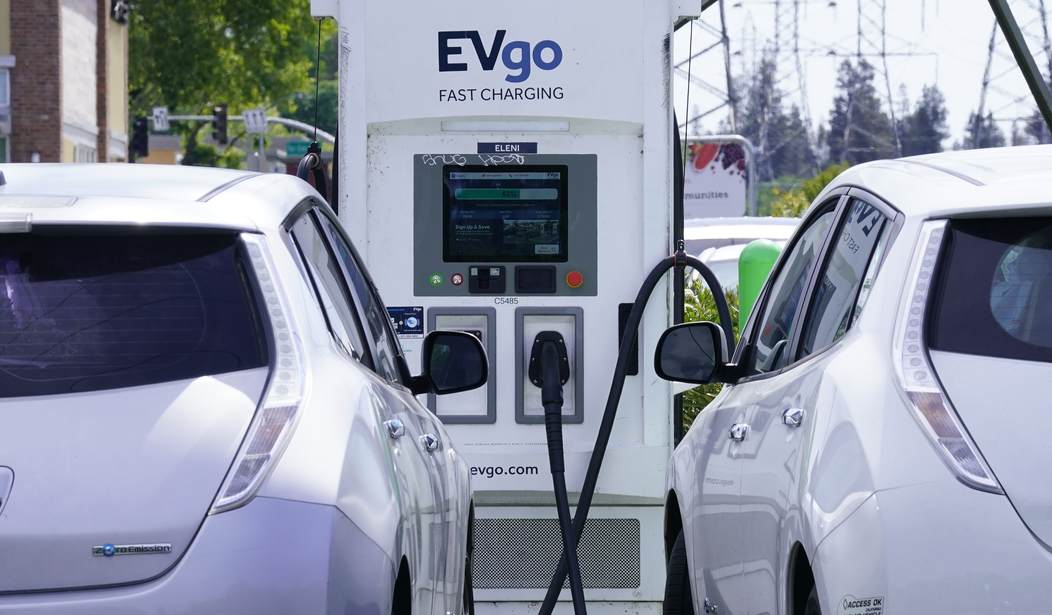What's wrong with electric vehicles? I could give a rat's patootie if they will help save the planet. There are actually some parts of Earth that don't deserve to be saved.
Putting aside my prejudice against New York City and the entire state of California, I just don't get electric cars.
Thanks to Julie Myhre-Nunes of Nerdwallet, I now understand why so many people are opposed to buying them. She drove a Chevy Volt from San Jose to Las Vegas, a 500-mile trip. Google Maps says the trip should take about 8 hours. Ms. Myhre-Nunes's trip took 11.5 hours. (More about that below.)
There may be a lot of people on the fence about purchasing an EV but I'm not one of them. I would love to get one if they can ever match a gas-powered car in performance, range, and style (the Tesla is pretty snazzy). But the timeline looks to be about 10 years before they can solve some of the most pressing problems with EVs that make driving one an exercise in blood pressure control.
First, when the manufacturer or the Department of Energy tells you that the EV has "X" number of miles before it needs recharging, faggettaboutit. That number bears as much resemblance to reality as the Chicago White Sox bear to resembling a professional baseball team.
The range given is a ludicrous number because very few drivers are traveling down a straight and level road without radios, heaters, or anything that makes driving less of a chore. Divide the range given by the manufacturer in half and go from there.
This brings us to the problem of where to find a charging station. I've written extensively about this problem and the massive undertaking of building enough of these charging stations — and keeping them in working order — to make EVs more than a status symbol for greens.
I charged the vehicle four times on my trip, using three of the four largest public charging companies: Electrify America, ChargePoint and EVgo. Because all three charging companies function differently, this meant that each time I was figuring out how payments and plugging in worked. It felt like I was 16 again and learning how to fuel up my car for the first time.
Depending on your area, you might have a plethora of charging options or not many at all, and it’s not always predictable. Consider two California cities of comparable size: Fresno with a population of 542,107 and Sacramento with a population of 524,943. When it comes to charging stations with Level 2 and direct-current (DC) fast chargers (the two fastest charging options), Sacramento has more than double the number of chargers in Fresno — 359 and 174, respectively, according to the U.S. Department of Energy. And there’s even more of a divide in different areas across the country.
The lack of charging stations has led to a brand new psychosis: charging anxiety. This is a real thing even if one does as Ms. Myhre-Nunes did: she sketched out her trip with EV charging locations in mind.
She still experienced charging anxiety.
I experienced this twice on my trip — when I reached Mojave, California, with a minimum of 20 miles left, and then pulling into Las Vegas, with a minimum of 32 miles left. Both times I was genuinely concerned that I wouldn’t make it to my next stop. I turned off the air conditioning, stopped listening to my audiobook, unplugged my cell phone and tried to remain positive.
I started to plan out my options for what to do if the car died. I looked up charging stations near me using my phone, but had no luck. Worst case, I was ready to use my AAA membership, although I don’t know what they could do other than tow the vehicle to a charger. Of course, this was first timer’s nerves, but in survey after survey, anxiety over charging and range is among the biggest blockers to widespread EV adoption, with one noting that some 40% of current EV owners still report having a little.
When traveling, you also absolutely must have a smartphone in working order. The charging stations (when they work) force customers to pay using their apps. Getting the app to work is sometimes a challenge. Since there's rarely an attendant on duty, you're SOL if your phone is dead.
Related: Auto Industry's Pullback From EVs Deepens
Before I buy an EV, several fixes would have to be implemented:
1. Better, more powerful batteries with a longer range and more get-up-and-go in the cars.
2. Charging stations that work all the time and can be found everywhere.
3. Charging stations that can charge a car in less than 5 minutes, just like a gas pump.
4. New styles that make the car look less like a box and more like a rocket ship.
It might be 10 years before most of these requirements are met—unless Republicans are in power and keep the government out of the way.










Join the conversation as a VIP Member